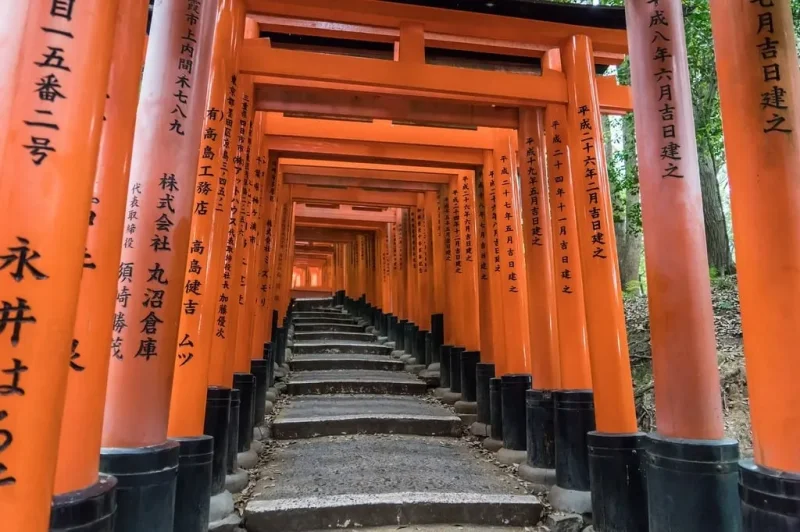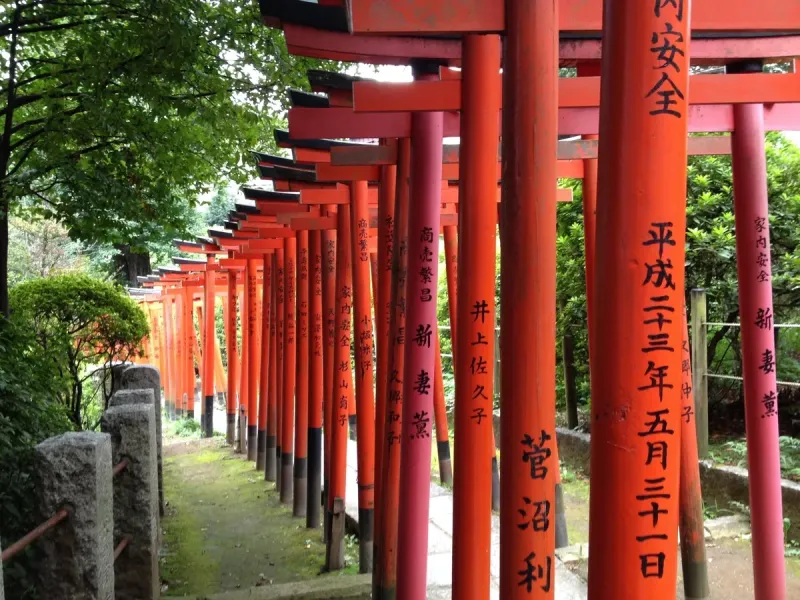Historical Significance
Fushimi Inari Taisha, located in Kyoto, Japan, is one of the most revered Shinto shrines dedicated to Inari, the deity of rice, agriculture, and prosperity. Established in 711 AD, it holds great historical significance as a spiritual center for Japanese culture. The shrine's importance is highlighted by its role as the head shrine for over 32,000 Inari shrines across Japan. The main shrine structure, or honden, dates back to 1499, showcasing traditional architectural styles that have been preserved through centuries.
Throughout history, Fushimi Inari Taisha has been a site of pilgrimage and devotion. Merchants and tradespeople have frequented the shrine to pray for prosperity and success in business. The shrine's cultural impact is immense, as it has been a source of inspiration for countless artworks and literature. Its connection to the prosperous Inari deity has made it a symbol of good fortune and success, drawing millions of visitors annually who seek blessings for their personal and professional endeavors.
Iconic Torii Pathways
One of the most striking features of Fushimi Inari Taisha is its iconic pathways lined with thousands of vibrant vermilion torii gates. These gates, known as Senbon Torii, gracefully wind their way up Mount Inari, creating a mesmerizing tunnel-like effect that captures the imagination of every visitor. Each gate is donated by individuals or businesses, with inscriptions marking the donor's name and date of the donation, symbolizing gratitude and hope for future blessings.
The torii pathways extend for approximately 4 kilometers, providing a serene and contemplative journey through lush forest landscapes. As visitors ascend the mountain, they encounter smaller shrines, offering a more intimate experience of worship and reflection. The contrast between the vivid red torii and the surrounding greenery creates breathtaking photo opportunities, making it a popular spot for photographers and nature lovers alike. The journey through these gates is not only visually captivating but also spiritually uplifting.
Cultural Experiences
Visitors to Fushimi Inari Taisha can immerse themselves in a variety of cultural experiences that reflect traditional Japanese customs. At the shrine's entrance, visitors can partake in a purification ritual by washing their hands and mouth at the temizuya, a practice that cleanses the body and spirit before entering sacred grounds. Seasonal festivals held at the shrine, such as the Inari Matsuri, offer a glimpse into the vibrant traditions and community spirit that define Japanese cultural heritage.
The area surrounding the shrine is teeming with stalls selling local delicacies and souvenirs, allowing visitors to savor traditional flavors and take home a piece of their experience. Visitors are encouraged to explore the neighboring hiking trails, which lead to panoramic views of Kyoto and its surrounding countryside. These experiences provide a deeper understanding of the cultural and natural beauty that Fushimi Inari Taisha embodies, making it a must-visit destination for travelers seeking to connect with Japan's rich history and spirituality.

_800.webp)












